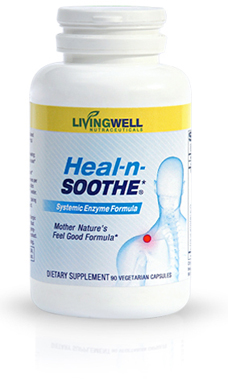8 Things You MUST Know Now About This Gross but Proven Therapy
Maggots — the larvae that come from fly eggs — have long been associated with dead, rotting flesh (zombies, anyone?). Flies lay their eggs in decaying flesh on purpose, as maggots love to feast on rotting material, including human flesh.
Ordinarily this may conjure up images of Halloween or grisly garbage, but maggot therapy, technically referred to as Maggot Debridement Therapy (MDT), is emerging as a legitimate medical technique that can now be found in some of the leading hospitals worldwide.
Maggot Therapy: Essential Facts to Know
8. Maggot Therapy is Ideal for Non-Healing Wounds
Pressure ulcers (bed sores), venous stasis ulcers (common in people with leg swelling, varicose veins, or blood clots), neuropathic foot ulcers (often found in diabetics), post-surgery wounds, or traumatic injury wounds can all benefit.
7. Maggots do More Than Eat Dead Flesh
One of the greatest benefits of maggot therapy is “debridement,” or cleansing wounds of dead and infected tissue. But maggots also release enzymes that help disinfect the wound, stimulate the growth of healthy tissue, and dissolve biofilm,[i] which is a collection of microbial cells that form on the surface of wounds, making it difficult for antimicrobial agents to enter.
6. With Maggot Therapy, Time is of the Essence
Recent research from the University of Caen Basse-Normandie in France revealed that maggot therapy worked wonders for wounds during the first week of treatment, leading to faster removal of dead tissue than conventional treatment.[ii] The benefits evened out the second week, which suggests maggot therapy may work best as a first-line wound treatment.
5. It Doesn’t Hurt
What does it feel like to have maggots in a wound? The majority of patients do not complain of any major discomfort during the treatment, although itching or a tickling sensation is sometimes reported. In about 20-25% of cases, MDT does cause an increase in pain in the wound that goes away after the treatment.[iii]
4. Maggot Therapy is Very Effective
An estimated 80-95% of wounds treated with maggot therapy achieve a complete or significant debridement, which means the dead or infected tissue is successfully removed. This is one of its major strongpoints, as dead tissue is effectively removed while live tissue is unharmed and often improved.[iv]
MDT reduces wound pain and odors, and often significantly reduces the risk of amputation or septicemia (blood infection).
3. It’s Ideal for Diabetics with Foot or Leg Ulcers
Foot ulcers impact a significant number of diabetics, and are the leading cause of lower-leg amputations among this population. In a study of diabetics with foot or leg ulcers that were not responding to conventional treatment, maggot therapy was significantly more effective at wound healing than simply continuing the standard care.[v]
2. It’s Worth a Try Even When Used as a “Last Resort”
Even when MDT is used after antibiotics and surgery have failed, and amputation seems imminent, it’s often effective. When used just prior to amputation, maggot therapy is reported to save 40—50% of limbs, usually with complete wound healing. These benefits are thought to be the result of increased oxygen perfusion,rapid and luscious spread of granulation tissue,cellular proliferation,fibroblast migration, and matrix remodeling that occur with maggot therapy.[vi]
1. You Have to Have a Prescription
Maggot therapy is regulated by the U.S. Food and Drug Administration and is available by prescription only using “medical grade” maggots. Not all doctors are aware of the latest maggot research, however, and as there’s not much financial incentive for them to prescribe them (maggots costs under $100, much less than repeated rounds of antibiotics or surgery) it may be difficult to find a willing prescriber.
Pam Mitchell, who was told by doctors shed’ have to have her foot amputated due to a diabetic ulcer knows this firsthand. As stated in U.S. News and World Report:[vii]
“Mitchell had a tough time convincing her providers to give the therapy a try. She recalls them telling her that they’d heard of maggot therapy but that they felt it wouldn’t work in her case. “Some doctors are ignorant,” she says. “And some are arrogant.””
Mitchell did eventually get maggot therapy and now her foot is completely healed. If you feel maggot therapy might benefit you, keep searching until you find a health care provider who is well informed of maggot therapy benefits and willing to work with you
Have You Heard About Proteolytic Enzymes?
(Try It FREE Today!)
Maggot therapy is clearly not for the squeamish. Obviously, if you have a life-threatening wound or the health of one of your limbs is hanging in the balance, maggot therapy is worth putting your squeamishness aside for … but you should know there are other (far less disgusting) techniques for healing wounds, one of them being proteolytic enzymes.
Proteolytic enzymes are produced naturally by your pancreas and used for a number of purposes, including fighting pain and inflammation, dissolving scar tissue, boosting your immune system to fight off infections and speeding up your recovery time from wounds and other injuries.
Unfortunately, your body stops producing optimal amounts of proteolytic enzymes sometime in your late 20s, which is why taking a proteolytic enzyme supplement is a very smart move. Heal-n-Soothe is our top-recommended solution, providing you pure and powerful proteolytic enzymes … along with the 11 OTHER most powerful and natural anti-inflammatories providing immediate and long-term relief for wound healing, pain relief and fighting all sorts of inflammation quickly and effectively…
And today you can try a bottle of Heal N Soothe FREE… just click here right now to learn more and get your free bottle!



stop buying GMO foods from the supermarkets… stop taking vaccines and flu shots…. the American and European Government are SICK EVIL WAR CRIMINALS who inject toxic chemicals and poisons into our food supply
Where can I get maggot therapy